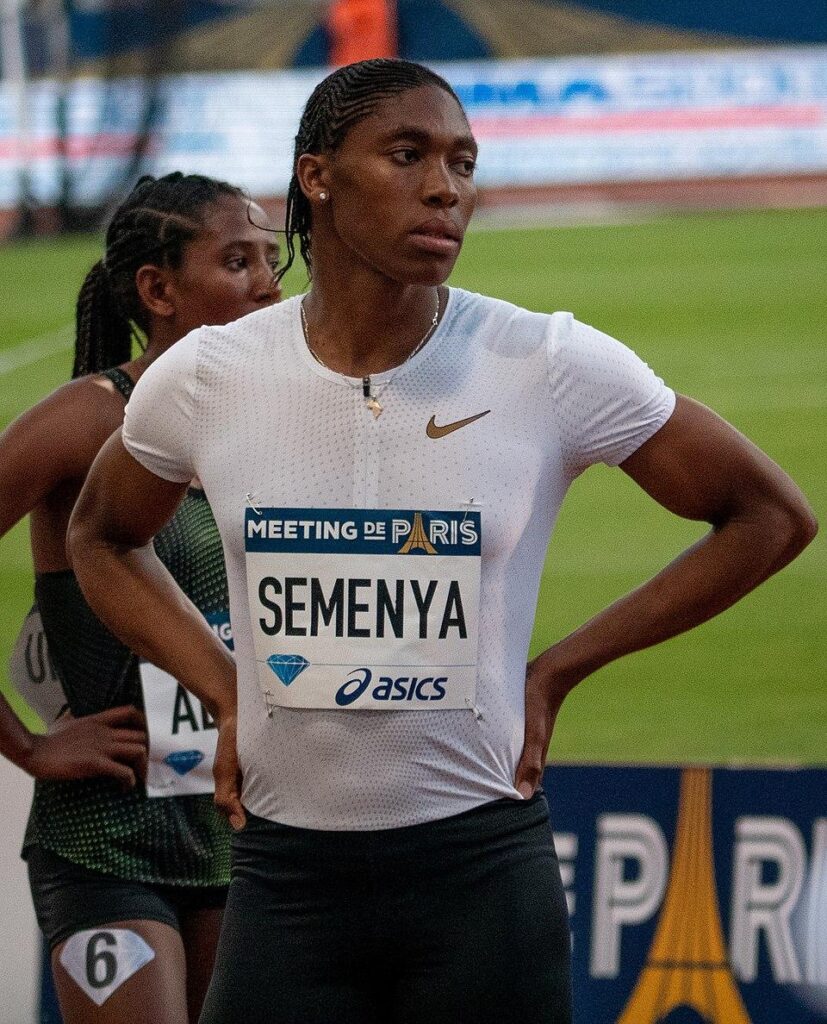South African middle-distance runner Caster Semenya has won a significant legal appeal, challenging the regulations that have long barred her from competing in women’s track events without undergoing hormone suppression. Despite the victory, Semenya remains unable to participate in women’s competitions without medically reducing her naturally elevated testosterone levels, underscoring the ongoing controversy surrounding eligibility criteria for female athletes with differences in sex development. The case continues to fuel global debate over fairness, inclusion, and the definitions of gender in competitive sports.
Caster Semenya Triumphs in Legal Battle Against World Athletics Policies
In a significant legal development, Caster Semenya secured a victory in her appeal challenging the controversial regulations set forth by World Athletics regarding testosterone levels in female athletes. The court acknowledged that the policies disproportionately impacted athletes like Semenya, marking a critical step toward greater fairness in sports governance. However, despite the win, the ruling confirmed that Semenya is still required to undergo hormone suppression treatment if she wishes to compete in women’s track events, underscoring the persistent complexity of balancing gender inclusion and competitive equity.
Key elements of the ruling include:
- Recognition of Discrimination: The court ruled that the current policy imposes discriminatory effects on athletes with Differences of Sexual Development (DSD).
- Mandatory Hormone Regulation: Athletes must maintain testosterone levels below a specific threshold to be eligible for women’s events.
- Ongoing Debate: The decision has reignited conversations surrounding transgender and intersex athletes in competitive sports.
| Athlete | Testosterone Threshold | Competition Eligibility |
|---|---|---|
| Caster Semenya | Below 5 nmol/L | Eligible with Suppression |
| Other DSD Athletes | Below 5 nmol/L | Eligible with Suppression |
| Non-DSD Female Athletes | Typically Below 2 nmol/L | Eligible |
Medical and Ethical Implications of Hormone Suppression in Female Athletics
The debate surrounding hormone suppression in female athletes like Caster Semenya remains fraught with complex medical risks and ethical dilemmas. Hormone therapy, often required to lower testosterone levels to meet eligibility criteria, can lead to a host of side effects including bone density loss, cardiovascular strain, and psychological stress. Critics argue that imposing such treatments violates bodily autonomy, forcing athletes into medical regimens simply to compete. Meanwhile, supporters contend that balancing fair competition necessitates these measures to address naturally occurring physiological advantages. This tension highlights the challenges in creating policies that protect both athlete health and the integrity of women’s sports.
Beyond the medical concerns, ethical questions emerge about inclusion, fairness, and identity. Female athletes with hyperandrogenism face social stigma and exclusion, raising broader issues about gender classification and discrimination in sports. The current approach effectively demands that athletes conform to narrow definitions of femininity to maintain eligibility. This has sparked calls from human rights advocates and bioethicists for more nuanced frameworks that respect diversity without compromising competitive equity. Some propose alternative models such as open categories or redefined eligibility standards, yet consensus remains elusive.
| Aspect | Consideration |
|---|---|
| Medical |
|
| Ethical |
|
Analysis of Regulatory Challenges Facing Intersex and DSD Athletes
Regulatory bodies continue to navigate a complex landscape when crafting policies impacting intersex and Differences of Sexual Development (DSD) athletes. Despite Caster Semenya’s recent legal victory affirming her right to compete, the mandate requiring hormone suppression remains unchanged. This condition not only places an ethical burden on the athletes but also raises critical questions around bodily autonomy and the scientific validity of performance regulations. Sports organizations face mounting pressure to balance fairness in competition with inclusivity, an equilibrium that remains elusive due to insufficient consensus in both medical and athletic communities.
Key challenges faced by regulators include:
- Lack of universally accepted biological criteria for defining eligibility in women’s events
- Disparities in policy enforcement across international governing bodies
- Legal and human rights considerations influencing regulatory frameworks
- Scientific disagreements over the impact of endogenous testosterone on athletic performance
| Aspect | Regulatory Issue | Implication |
|---|---|---|
| Hormone Levels | Threshold setting for testosterone | Excludes some athletes from competition |
| Legal Rights | Right to compete vs. bodily autonomy | Ongoing court challenges |
| Scientific Evidence | Conflicting studies on performance advantage | Policy inconsistencies |
| International Variation | Divergent standards across countries | Unequal competition conditions |
Recommendations for Inclusive and Fair Competition Frameworks in Track and Field
To foster a genuinely inclusive and fair competitive environment, governing bodies in track and field must reconsider the rigidity of current hormone-based eligibility rules. Instead of blanket hormone suppression mandates, eligibility frameworks should evolve towards individualized assessments that balance athletic fairness with human rights. This involves integrating scientific insights that consider not only hormone levels but also genetic, physiological, and performance-based factors to prevent one-size-fits-all solutions that disproportionately impact athletes like Caster Semenya.
Key recommendations for achieving this balance include:
- Transparent, evidence-based policies that prioritize fairness without compromising dignity.
- Ongoing dialogue with athletes, medical experts, and human rights organizations.
- Implementation of alternative competition categories or modified event classifications that provide more options for diverse athletes.
- Regular policy reviews to adapt rules as new scientific data emerges.
| Recommendation | Potential Impact |
|---|---|
| Individualized Assessments | Reduces unfair exclusions |
| Alternative Competition Categories | Increases athlete participation |
| Regular Policy Reviews | Ensures up-to-date fairness |
| Stakeholder Collaboration | Builds trust and transparency |
In Summary
Caster Semenya’s recent legal victory marks a significant moment in the ongoing debate over gender, sports, and fairness. However, despite winning her appeal, the ruling maintains that she cannot compete in women’s events without undergoing hormone suppression treatment. As this complex issue continues to unfold, it highlights the challenging balance between inclusivity and competitive equity within athletics. Stakeholders from all sides await further developments, underscoring the need for clear policies that respect both the rights of athletes and the integrity of women’s sports.





